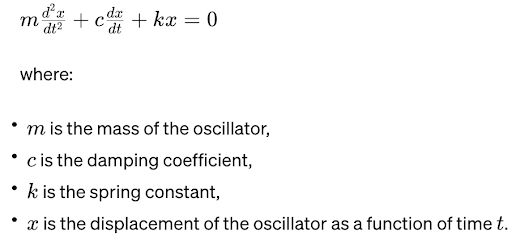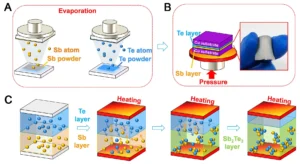The concept of a damped harmonic oscillator is crucial in various fields such as physics, engineering, and signal processing. In the realm of oscillatory systems, the quality factor (Q-factor) plays a significant role in characterising the behaviour and efficiency of these systems. This article aims to provide a comprehensive understanding of the quality factor in damped harmonic oscillators, exploring its definition, significance, and applications.
Damped Harmonic Oscillator Overview:
A harmonic oscillator refers to a system where an object oscillates back and forth around a stable equilibrium position under the influence of a restoring force. In reality, many oscillatory systems experience damping, a process that reduces the amplitude of oscillations over time due to external factors like friction or air resistance.
The equation describing a damped harmonic oscillator can be written as:

Quality Factor (Q-factor):
The quality factor, denoted by Q, is a dimensionless parameter that characterises the efficiency of a damped harmonic oscillator.
It is defined as the ratio of the energy stored in the oscillator to the energy dissipated per cycle.
Mathematically, the quality factor can be expressed in terms of the mass (m), damping coefficient (c), and angular frequency (ω0) as follows:

Significance of the Quality Factor:
Amplitude Response:
A higher quality factor implies less damping and, consequently, a slower decay of oscillations. This results in a sharper and more focused resonance peak in the amplitude response.
Bandwidth:
The bandwidth of a damped harmonic oscillator is inversely proportional to the quality factor. A higher Q-factor corresponds to a narrower bandwidth, indicating a system that responds more selectively to specific frequencies.
System Stability:
The quality factor is closely related to the stability of the system. A critically damped system (Q = 0.5) returns to its equilibrium position in the shortest time without oscillating, whereas an over-damped system (Q < 0.5) takes longer to return.
Energy Efficiency:
In resonant systems, a higher Q-factor indicates better energy storage capability, allowing the system to sustain oscillations for a more extended period before energy is dissipated.
Applications of the Quality Factor:
Mechanical Engineering:
Q-factor is crucial in designing mechanical structures to minimise energy losses in oscillatory systems, such as in the construction of bridges and buildings.
Electronics and Signal Processing:
Q-factor is used in the design of electronic filters and resonant circuits to control the sharpness of the frequency response and the selectivity of the circuit.
Acoustics:
In acoustics, the Q-factor is employed to characterise the resonant behaviour of musical instruments and to design speakers and sound systems for optimal performance.
Conclusion:
The quality factor in damped harmonic oscillators is a fundamental parameter that governs the efficiency, stability, and selectivity of oscillatory systems. Understanding the Q-factor is essential in various scientific and engineering disciplines, contributing to the design and optimisation of systems that involve oscillations and vibrations. As technology continues to advance, the role of the quality factor in enhancing the performance of mechanical, electronic, and acoustical systems becomes increasingly significant.




